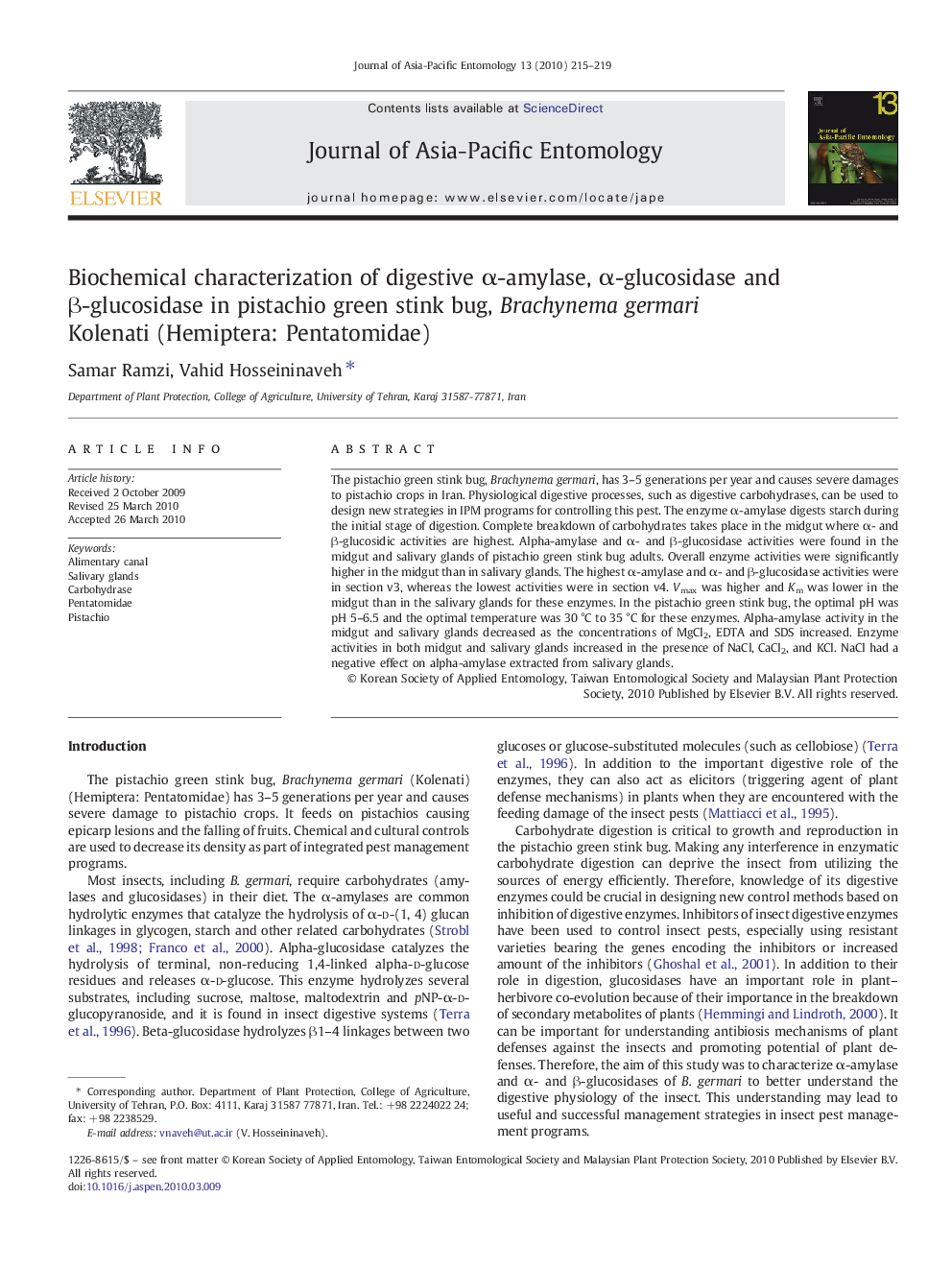| Article ID | Journal | Published Year | Pages | File Type |
|---|---|---|---|---|
| 4524934 | Journal of Asia-Pacific Entomology | 2010 | 5 Pages |
The pistachio green stink bug, Brachynema germari, has 3–5 generations per year and causes severe damages to pistachio crops in Iran. Physiological digestive processes, such as digestive carbohydrases, can be used to design new strategies in IPM programs for controlling this pest. The enzyme α-amylase digests starch during the initial stage of digestion. Complete breakdown of carbohydrates takes place in the midgut where α- and β-glucosidic activities are highest. Alpha-amylase and α- and β-glucosidase activities were found in the midgut and salivary glands of pistachio green stink bug adults. Overall enzyme activities were significantly higher in the midgut than in salivary glands. The highest α-amylase and α- and β-glucosidase activities were in section v3, whereas the lowest activities were in section v4. Vmax was higher and Km was lower in the midgut than in the salivary glands for these enzymes. In the pistachio green stink bug, the optimal pH was pH 5–6.5 and the optimal temperature was 30 °C to 35 °C for these enzymes. Alpha-amylase activity in the midgut and salivary glands decreased as the concentrations of MgCl2, EDTA and SDS increased. Enzyme activities in both midgut and salivary glands increased in the presence of NaCl, CaCl2, and KCl. NaCl had a negative effect on alpha-amylase extracted from salivary glands.
